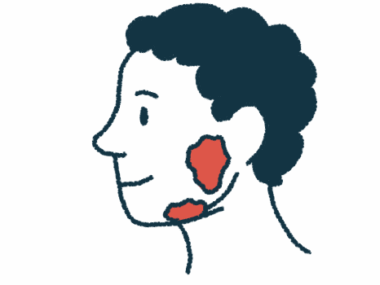What a pituitary MRI looks like for me as a Cushing’s disease patient
A columnist shares tips for what to expect and how to prepare for an MRI
Written by |

This column is dedicated to something that most Cushing’s disease patients have experienced: the dreaded MRI. I’d almost forgotten what an anxiety-inducing experience it can be until I had another scan done last week.
Cushing’s disease is typically caused by a tumor in the pituitary gland, which is at the base of the brain. My first tumor, which was removed surgically in 2020, was only 4 mm. Since I was diagnosed with a second tumor a little over a year ago, I’ve had to complete multiple MRIs to gauge its size and location.
My pituitary MRIs are done with contrast on a 3T MRI machine. My insurance company requires pre-authorization, which means my doctor has to contact them for approval. From there, I’m given a window in which I can schedule and complete my MRI. This time, authorization took a little over 30 days.
Going through these hoops can be time-consuming and frustrating, but one advantage is that I know the exact cost of the procedure in advance.
How I prepare
I have several piercings, but body jewelry isn’t allowed in MRI machines. So the night before, I remove all of my ear jewelry and clean out the holes. Since the piercings are older, the holes likely won’t close overnight. However, because my septum piercing and nose ring are newer, I keep them in until right before the procedure, and then place them in a small Ziploc bag in the locker I’m provided.
I bring with me a change of clothes, my MRI script, my doctor’s directions, my insurance card, and a copy of my identification. Usually I arrive 30-40 minutes before my appointment time. The process makes me anxious, so I give myself time to find calm moments.
Once I check in, a staff member brings me into a private room where I change into a gown. At most facilities, I can leave on my pants while in the MRI, so I try to wear ones that are comfortable and warm. I put my things into the locker and am led into another room where an IV is inserted into my arm. It gives technicians easy access to my vein when they’re ready to inject the contrast.
I have a slight allergy to contrast that causes me to feel nauseous and vomit, so I usually bring an alcohol pad with me. The smell helps me combat nausea — a trick I learned from an old MRI technician. It’s been a lifesaver.
The MRI itself
I lie down on the table and try to get as comfortable as I can. Technicians usually offer me a blanket and pillow for beneath my legs, and then they place a large plastic cage over my face. At this point, they’ll slowly slide me into the tube. Since it’s a pituitary MRI, I only go in to my calves.
If I let my mind wander while in the machine, I’ll get incredibly stressed. What if they’re doing it wrong? What are they finding?
Instead, I think about preapproved topics to distract me. It might seem silly, but it keeps me sane! It was especially helpful this time around, as my mind kept wandering to the MRI scene in the “Insidious” movie. What a nightmare.
My preapproved topics for this MRI included:
- The book I’m writing
- My husband’s 30th birthday party
- Spooky season
- My Halloween costumes.
The MRI machine usually clangs and bumps for about 30 minutes before the contrast is added by either a human or the machine, depending on the facility. This time, it was administered through the MRI machine. I tried to breathe and focus to make sure I didn’t get too nauseous. After that, I’m usually in there for another 10-20 minutes.
Once it’s over, I can breathe fully again! Nobody likes MRIs, but if you know what to expect, they don’t feel quite as scary.
You can follow my journey more closely on TikTok or YouTube.
Note: Cushing’s Disease News is strictly a news and information website about the disease. It does not provide medical advice, diagnosis, or treatment. This content is not intended to be a substitute for professional medical advice, diagnosis, or treatment. Always seek the advice of your physician or other qualified health provider with any questions you may have regarding a medical condition. Never disregard professional medical advice or delay in seeking it because of something you have read on this website. The opinions expressed in this column are not those of Cushing’s Disease News or its parent company, Bionews, and are intended to spark discussion about issues pertaining to Cushing’s.







Sandra Benke
I can actually FALL ASLEEP by making up a rhythm corresponding rhythm. Since, I have already 3 pit surgeries, I have had plenty of
MRI's.. I am now trying to battle my 4th pit tumor - no more surgeries, as I only have a "rind of a pituitary" - so I am trying the
medication mifepristine. There are just too many for "senior" to have to deal with.
'DO THE BEST YOU CA'N' "ONE DAY AT A TIME"
You all "WILL HAVE EVERYONE IN MY PRAYERS!!"